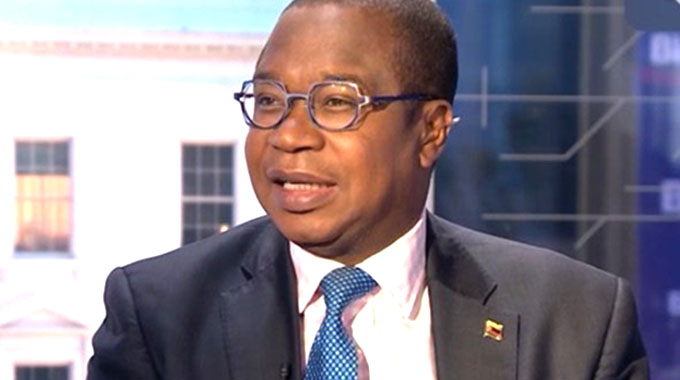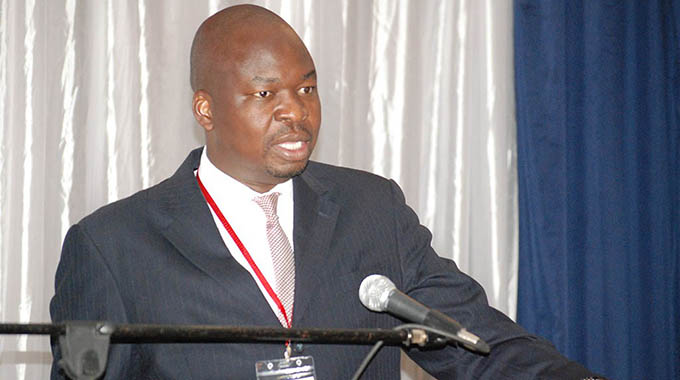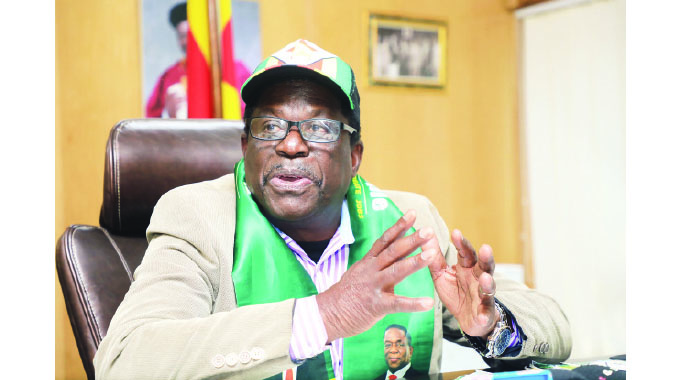Bulawayo’s rebirth beckons

Mashudu Netsianda
Bulawayo Bureau
BULAWAYO is on the path to reclaiming its position as the country’s industrial hub with the metropolitan province’s Gross Domestic Product (GDP) of $2,3 billion set to increase.
This follows Government’s commitment to address the city’s perennial water crisis as evidenced by the combined ground-breaking ceremony of the Gwayi-Shangani pipeline and commissioning of the Epping Forest water supply argumentation project in Nyamandlovu by President Mnangagwa yesterday.
Bulawayo has since 2019 been grappling with probably its worst water challenge in history largely due to the effects of climate change and depleting water levels at its supply dams located in Matabeleland South province. Epping Forest water project is one of the key water projects undertaken by Government to address critical water challenges in Bulawayo.
The Zimbabwe National Water Authority (Zinwa) drilled 20 boreholes at the Nyamandlovu Aquifer to augment water supply in Bulawayo. The project is part of key interventions, which will see Bulawayo regaining its status as the country’s industrial hub.
Pumping water from Nyamandlovu aquifer boreholes is expected to ease Bulawayo’s water crisis as the city will have an additional 10 megalitres (ML) a day.
Finance and Economic Development Professor Mthuli Ncube said Bulawayo is poised for industrial growth, which will subsequently see the metropolitan province move from lower middle income to upper middle income status by 2030.
“The National Matabeleland Zambezi Water Project (NMZWP) will go a long way in building the provincial GDP in Matabeleland North and Bulawayo. Matabeleland North’s GDP is the United States dollars equivalent of $1,2 billion and the income per capita is US$1 333. Bulawayo GDP is $2,3 billion United States dollars equivalent and per capita person is US$3 000, which is already lower middle income and needs to move to upper middle income which is past the US$3 500 mark,” he said.
Prof Ncube said Bulawayo’s industrial growth hinges on reliable water supply with the Gwayi-Shangani pipeline set to end Bulawayo water woes and boost the city’s water supply to 450ML per day.
“As history shows this project was mooted as far back as 1912 with a variety of financing options having been pursued but without much success. However, during the last two years, the Second Republic is aggressively putting resources towards ensuring the delivery of the long-awaited project,” he said.
Prof Ncube said consistent with the President’s vision of transforming the economy into an upper middle-income society by 2030, the intervention by Government to address Bulawayo’s water crisis buttresses the strategic plans under the National Development Strategy 1 (NDS1) of closing the gap between supply and demand for water, including investments and basic sanitation requirements of citizens.
“Today’s (yesterday’s) event shows that there is tremendous progress already made under the first phase of the project. This provides ample evidence of the Second Republic’s commitment under the astute leadership of President Mnangagwa to enhance water supply for the country.”
The first phase of the Gwayi-Shangani dam project is earmarked for completion at the end of the year. Treasury allocated $4,5 billion for the completion of the project and a further $535 million for the development of detailed designs and procurement of local contractors for the pipeline and more funds are set to be channelled towards the project.
“As we embark on the development of the pipeline, it is also critical that other downstream projects including the envisaged agricultural greenbelt that will ensure effective utilisation of the water along the pipeline are concurrently initiated. This is the beginning of the last stage of our dream under NMZWP comprising the Gwayi-Shangani Dam and the pipeline,” Prof Ncube said.
Government is funding 10 dam projects across the country which are being prioritised, among them the Gwayi-Shangani Dam targeted for completion this year together with Chivhu, Causeway in Marondera. Treasury allocated $150 million for Epping Forest and Rochester boreholes which are now pumping an additional 20ML of water to Bulawayo daily.
Bulawayo Provincial Affairs and Devolution Minister Judith Ncube said the ground breaking ceremony of Gwayi-Shangani pipeline and commissioning of the Epping Forest project triggers hope and signifies commitment by the Second Republic to permanently address the city’s water challenges.
She said water is a key enabler of all economic activities hence Bulawayo will start attracting investment and regain to its former status of being Zimbabwe’s industrial hub.
“We are confident that this new development will attract investment in Bulawayo in line with the desire by Government to transform the country into an upper middle-income economy by 2030. As Bulawayo Metropolitan Province we are indeed over joyed by the groundbreaking of the Gwayi-Shangani pipeline and the commissioning of the Epping Forest water augmentation project,” she said.
“We are also excited by the commencement of the second phase of National Matabeleland Zambezi Water Project signified by the groundbreaking ceremony. Gwayi-Shangani to Bulawayo pipeline triggers in us the people of Bulawayo so much hope and signifies commitment by the second Republic to permanently address the water challenges that the country’s second largest city has perennially battled with.”
The NMZWP was mooted in 1912 and it has been a pipeline dream, but President Mnangagwa has brought the project to fruition.
“On behalf of Bulawayo, I would like to thank the President for work you have done since assuming office to address the water challenges that have characterised the city. Most importantly, we are indebted to your administration for working tirelessly in the past year to address the water crisis in Bulawayo last year,” said Minister Ncube.
“However, through support from the Government, Zinwa implemented the Rochester emergency water project which saw the rehabilitation and equipping of boreholes that pump up the water supply from Rochester to a daily of 10ML per day from an average of 3ML per day.”
Minister of Local Government and Urban Development July Moyo said Government is working on augmenting the pumping station in Mtshabezi as well as the uplifting pumps in Inyankuni. He said once those two are done Bulawayo will be able to receive more than 165ML of water per day, which is more than its daily consumption of 155ML.
“Bulawayo is now pumping 125ML from the existing dams. Together with Epping Forest and Rochester they will now be able to pump 145 ML of water per day with a shortfall of 10ML. This should therefore give investors an advantage to say Bulawayo is back on its feet,” he said. The President last year deployed a team comprising 11 engineers to Bulawayo as part of efforts to solve the city’s perennial water shortage.
“We assembled a team of 11 engineers drawn from various Government agencies. We agreed on a plan of action and the hanging fruits were Rochester in Nyamandlovu, which needed to be upgraded from 3ML to 10ML and that was done,” said Minister Moyo.
Matabeleland North Provincial Affairs and Devolution Minister Richard Moyo said the two water projects are set to radically transform the water situation in Matabeleland North and Bulawayo. “The Gwayi-Shangani pipeline marks one step towards the realisation of the long awaited NMZWP. The ground water resources will help sustain livelihoods in the region and propel socio-economic development in the province in line with Vision 2030 and devolution agenda,” he said.











Comments